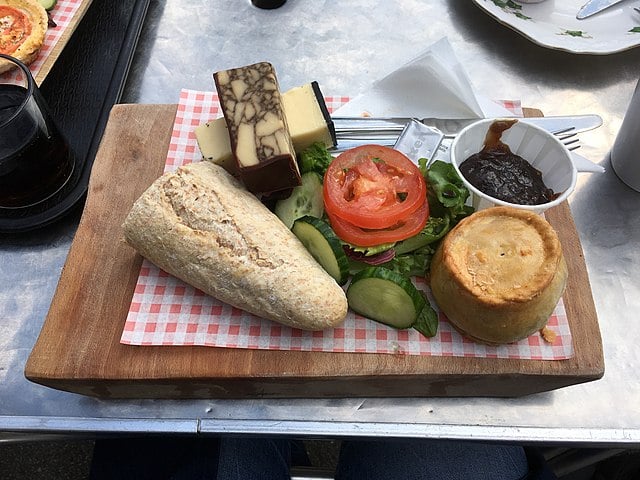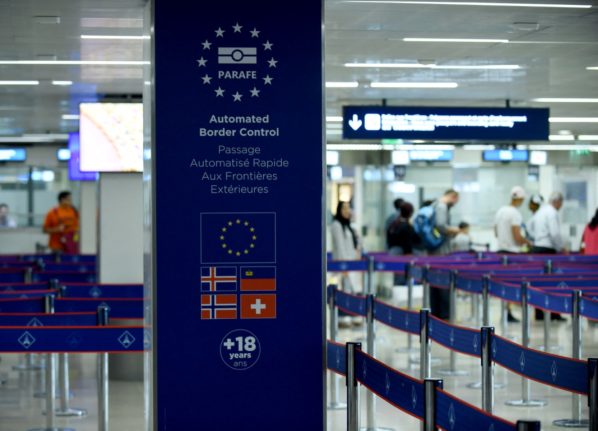Flying to the UK from Spain
For those flying to the UK from Spain, the rules are relatively lax.
Note, if you’re spending the summer in Northern Ireland there are different rules on food and animal products. Find them here.
You can bring the following products from Spain into the UK without worrying about any restrictions:
- bread, but not sandwiches filled with meat or dairy products
- cakes without fresh cream
- biscuits
- chocolate and confectionery, but not those made with unprocessed dairy ingredients
- pasta and noodles, but not if mixed or filled with meat or meat products
- packaged soup, stocks and flavourings
- processed and packaged plant products, such as packaged salads and frozen plant material
- food supplements containing small amounts of an animal product, such as fish oil capsules
Meat, dairy, fish and animal products
If, like many of us, you have friends and family already putting in their orders for stocks of jamón serrano, know that the rules on bringing meat, dairy, fish and other animal products into the UK are relatively relaxed. You can bring in meat, fish, dairy and other animal products as long as they’re from the EU, so your jamón and Manchego cheese are safe.

Alcohol allowance
For many, the big one, but there are some limits on how much booze you can bring in from Spain and the EU more generally. How much you can bring depends on the type of alcohol, so get up to speed on the limits and make sure your favourite Rioja and Cava aren’t taken off you or heavily taxed:
Limits:
- beer – 42 litres
- still wine – 18 litres
- spirits and other liquors over 22 percent alcohol – 4 litres
- sparkling wine, fortified wine (port, sherry etc) and other alcoholic drinks up to 22 percent alcohol (not including beer or still wine) – 9 litres
It’s worth knowing that you can split your allowance, for example you could bring 4.5 litres of fortified wine and 2 litres of spirits (both half of your allowance).
Flying into Spain from the UK
While British borders are laid back when it comes to travelling with food and drink, the rules are much tougher when entering the EU from the UK.
Most importantly, tea bags – longed for by Brits the world over – are allowed. Marmite, which is vegan, is also fine to bring but Bovril, which contains beef stock, is not.
Travellers arriving in the EU from Britain can, according to the European Travel Retail Confederation (ETRC), bring the following quantities of alcohol, so if you fancy a British tipple in Spain over the summer such as Pimm’s it is possible, within reason: 4 litres of still wine and 16 litres of beer, 1 litre of spirits, or 2 litres of sparkling or fortified wine.
If you arrive in the EU from a non-EU country, you cannot bring any meat or dairy products with you. That means no Wensleydale, no Cornish Brie in your ploughman’s lunch and no British bacon to enjoy in Spain for English breakfast fry-ups.

The EU’s strict rules mean that all imports of animal-derived products technically come under these rules, so even your custard powder to make rhubarb fool or bars of your favourite chocolate are now banned, because of the milk.
Be aware, however Spanish customs do not always check your suitcase, so you may be able to get away with bringing in a small packaged item such as a chocolate bar, without it being confiscated.
Similarly, if you’re planning on asking a friend or family member to bring you over some sweets, cakes, or other home comforts, be aware that the ban includes all products that contain any meat or dairy as an ingredient – which includes items like chocolate, fudge, and some sweets (because of the gelatine.)
You are allowed to bring a small quantity of fruit and vegetables as well as eggs, some egg products, and honey. Restricted quantities of fish or fish products are also allowed: eviscerated fresh fish products (gutted, with all the organs removed), and processed fishery products are allowed up to 20 kg or 1 fish, so you can enjoy some Scottish smoked salmon in Spain over the summer if you want.
If you’re travelling with kids, note that powdered infant milk, infant food and specifically required medical foods are allowed up to 2kg, as is the case for pet foods.

This means that even the classic British summertime favourites such as sausage rolls, scotch eggs, packaged trifle and clotted cream for your cream tea will not be allowed because of the meat and dairy they contain.
It is worth noting that these strict EU rules also apply to sending products by post, so if you were hoping to get around the newly applicable legislation by having someone send you a delivery some Devon fudge, they will probably be intercepted and confiscated by Spain’s postal service, unfortunately.
READ ALSO: Are there limits on bringing medicines into Spain?



 Please whitelist us to continue reading.
Please whitelist us to continue reading.
Member comments